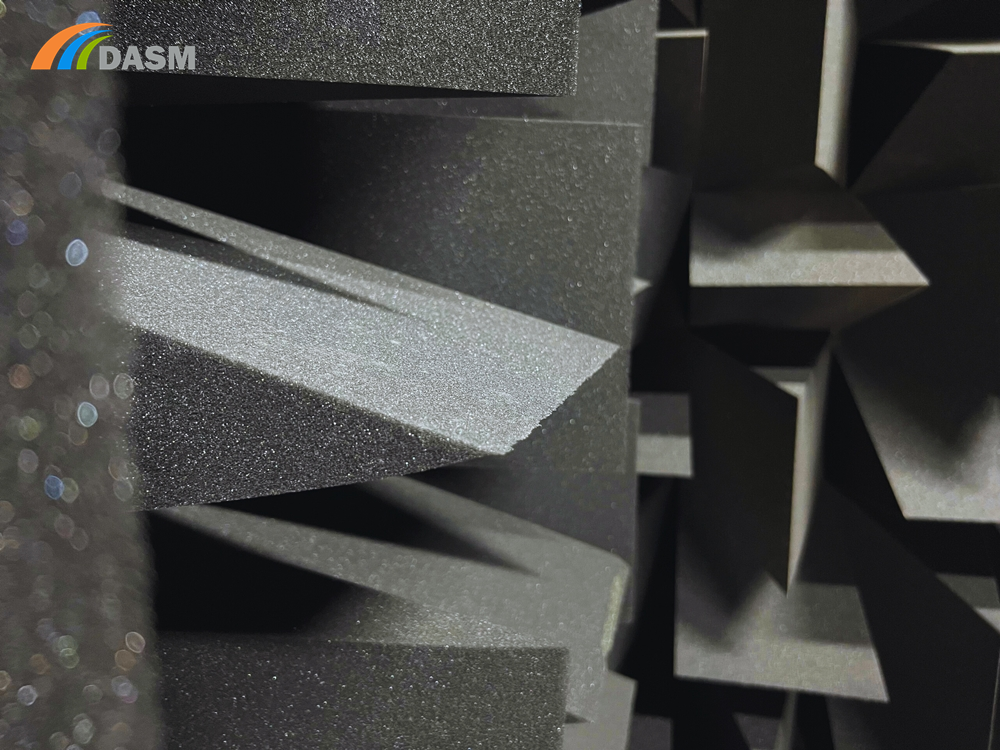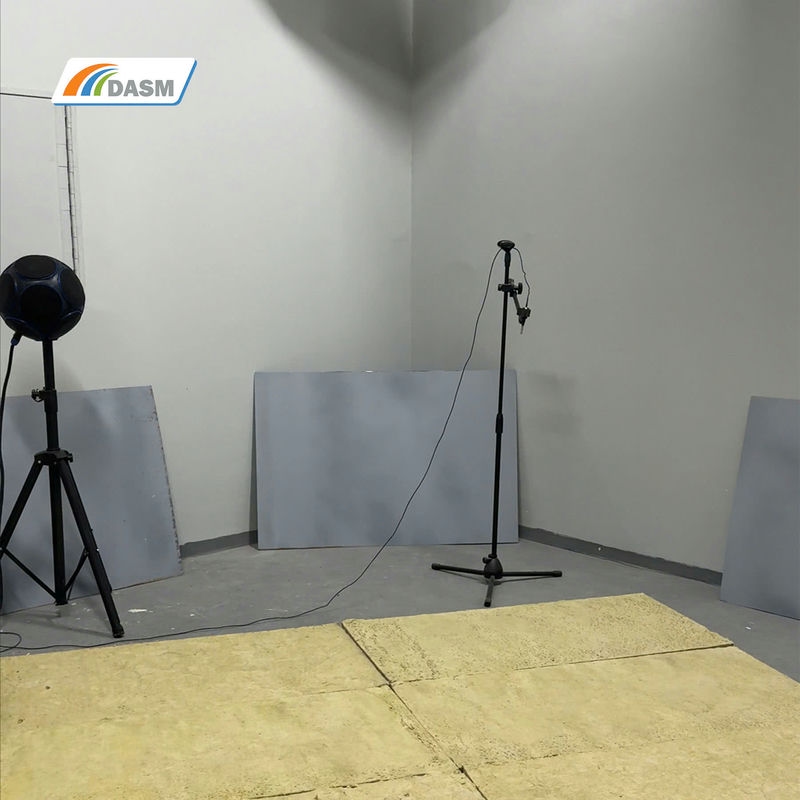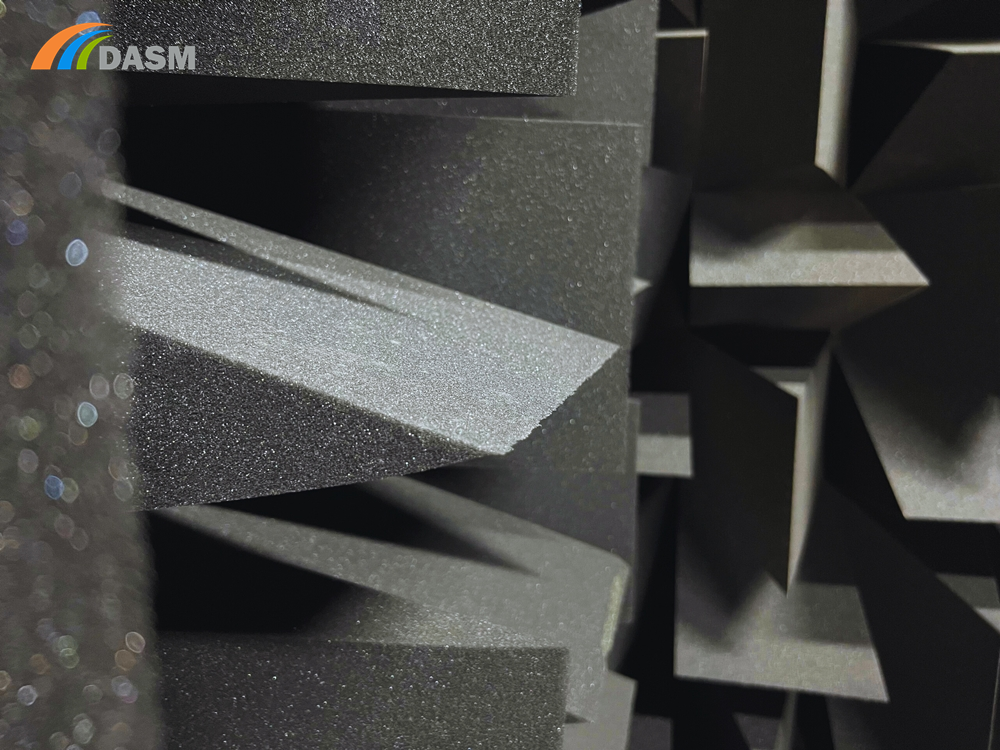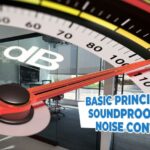Sound is not only a medium for transmitting information, but it also directly affects the quality of spatial experiences. In architecture, construction, and material manufacturing, sound control plays an important role in ensuring an optimal acoustic environment. One of the key factors is sound absorption – also known as a material’s ability to dampen or attenuate sound.

This article will help you understand:
+ What sound absorption is and how it works
+ The sound-absorbing coefficient (α) and how to calculate it
+ Common testing methods such as Kundt’s Tube (ISO 10534-2) and Reverberation Room (ISO 354)
+ Practical applications of sound-absorbing materials
+ DASM’s professional material acoustic testing services, meeting international standards in Vietnam.
What is Sound Absorption?
Sound absorption, also known as sound-absorbing, is the process by which a material, structure, or object absorbs sound energy when it encounters sound waves, as opposed to reflecting it.
When sound waves hit a surface:
+ A portion is reflected
+ A portion passes through
+ The remainder is absorbed by the material
Some of the absorbed energy is converted into heat and some is transmitted through the absorber. The energy converted into heat is considered “lost.”
Sound-absorbing Formula
The ratio between absorbed sound energy (E) and incident sound energy (E₀) is called the sound absorption coefficient (α):
α=E/0E
Where:
+ E = absorbed sound energy (including penetration)
+ E₀ = incident sound energy
The sound-absorbing coefficient ranges from 0 to 1:
+ The higher the value, the better the absorption
+ For suspended absorbers, α can be greater than 1 due to an effective absorption area larger than its physical area
Example:
If a wall absorbs 63% of incident energy and reflects 37%, then α = 0.63.
How to Measure Sound Absorption Coefficient
The sound absorption coefficient and acoustic impedance are measured using different methods depending on the type of incident sound field:
Kundt’s Tube / Impedance Tube (ISO 10534-2)
Reverberation Room (ISO 354)
Kundt’s Tube Method (ISO 10534-2)
For small material samples, an impedance tube—also known as Kundt’s Tube or standing wave tube—is used.

Principle:
A loudspeaker generates sound waves inside a tube. The waves hit the test sample, partially reflect, and form standing waves. Two microphones placed at fixed positions measure sound pressure, allowing calculation of α and impedance.
Advantages:
Requires small samples
Fast and precise for normal incidence sound
Standards:
ISO 10534-2 specifies using broadband signals and two-microphone transfer function measurements. This method is widely used in laboratories.
Reverberation Room Method (ISO 354)
For larger samples, the reverberation room method is used. Measurements are taken in a diffuse sound field to get an average absorption value over all incidence angles.
Requirements:
Sample area: 10–12 m²
Specific shape and placement to account for edge diffraction effects, which can make α > 1.0.
Applications:
This method is standard for manufacturers to provide certified absorption data.

Example Sound Absorption Coefficients:

Sound absorption coefficients of some popular materials
Applications of Sound-Absorbing Materials
Depending on their characteristics and α values, sound absorbers are used in:
+ Concert halls, theaters, auditoriums
+ Recording studios, broadcast rooms
+ Office spaces, schools, and libraries
+ Industrial noise control
+ Acoustic treatment in transportation interiors
+Proper use improves speech intelligibility, reduces echoes, and enhances sound quality.
Where to Get Accurate Sound Absorption Testing in Vietnam
At DASM, we provide professional acoustic testing services and sound-absorbing coefficient measurements according to ISO 10534-2 and ISO 354.
Why choose DASM?
+ VILAS-certified laboratory
+ Advanced measuring equipment
+ Experienced acoustic engineers
+ Reliable, accurate, and internationally recognized results
Our services include:
+ Testing & evaluating your material’s absorption performance
+ re-production performance verification
+ Acoustic material optimization consulting
+ Acoustic consulting and design for buildings
+ Laboratory reports for certification & research
Contact DASM today for professional, standard-compliant sound absorption testing.








